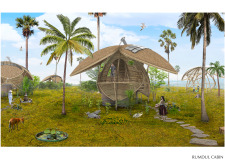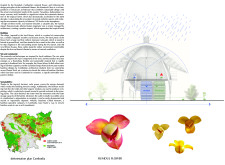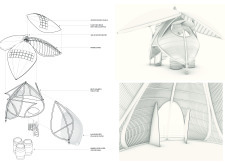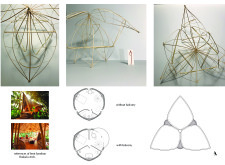5 key facts about this project
The Rumduol Cabin is located in Cambodia and exemplifies a thoughtful blend of traditional design with modern sustainable practices. Inspired by the national flower, the Rumduol, the cabin forms a connection to the local environment. It serves an eco-tourism function, offering a welcoming space for visitors while emphasizing the importance of conservation and ecological responsibility. The design reflects challenges such as deforestation and aims to create a positive impact within its surroundings.
Symbolism and Form
The design of the Rumduol Cabin draws heavily from the form and symbolism of the Rumduol flower. The structure has a roof that resembles the flower's petals, creating a visual link to nature. This design is not just for aesthetics; it plays a crucial role in the cabin's functionality, particularly in relation to water collection and drainage.
Water Management and Climate Adaptation
The large roof of the cabin is designed to capture rainwater effectively. During monsoon seasons, this water is collected and stored in barrels located at ground level. This system ensures that water is available for use during drier months, highlighting an innovative approach to resource management. In addition, the cabin promotes natural ventilation, which helps maintain a comfortable indoor environment, despite the hot and humid conditions typical of the region.
Use of Local Materials
Local materials are integral to the construction of the cabin, reinforcing its connection to the area's culture and heritage. The walls are primarily made from rice palm leaves, while bamboo is utilized for both structural and decorative purposes. These materials are not only environmentally friendly but also uphold traditional building methods, providing a sense of identity and continuity within the community.
Sustainability and Ecological Impact
Beyond its construction materials, the cabin is designed with a strong focus on sustainability. It incorporates solar power to meet energy needs, achieving a net-zero energy balance. Waste generated on-site is composted, enriching the surrounding soil and supporting agricultural practices. This approach positions the cabin not only as a living space but also as an active contributor to local ecological restoration efforts.
The roof's design stands out not only for its functionality in water collection but also for its ability to provide shade, creating comfortable outdoor areas for relaxation and interaction with nature.






















































